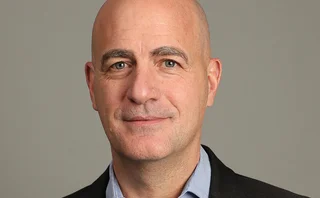
Law firm of the year: Cadwalader, Wickersham & Taft
Risk Awards 2018: Staff at one European bank were facing a 30–40% Volcker rule loss on their investments, until Cadwalader got involved

The financial services practices of white-shoe law firms are not typically seen as champions of the little guy. This year, Cadwalader, Wickersham & Taft was the exception to the rule, protecting bank staff from a Volcker-rule hit to their investments, and finding a way to settle the debts run up by the state of Illinois to dozens of service providers – from the health insurers that cover the state’s employees, to laundry firms that wash its prisons’ clothes.
It was also involved in a host of more characteristic work – for example, ironing out the wrinkles in the over-the-counter market’s new variation margining rules – but helping a large international bank shield its staff investment scheme from an estimated 30–40% loss was a way for Cadwalader to stand out.
“It would have been difficult for the bank and it would have been a horrendous loss for the employees. We were able to create a solution that no other bank had done or thought was possible,” says Scott Cammarn, a partner at Cadwalader in Charlotte.
The employees’ savings were under threat from the Volcker rule, which bars banks from directly or indirectly owning or sponsoring a variety of ‘covered funds’ – generally, hedge funds and private equity funds. Before the rule was added into the Dodd-Frank Act late in the legislative process, the bank had offered its employees the chance to invest in private equity funds, which ended up being caught by the rule. Many took up the offer.
The Volcker rule gave banks and their employees until July 21, 2017 to exit their investments in covered funds. In the case of the bank’s scheme, this deadline was too soon – in most cases, the funds had a 10–12 year maturity and investments had been made in 2010. Exiting early would be painful – the terms and conditions vary from one fund to the next, but where it is allowed, shareholders would be left hoping for a bid in an extremely illiquid market.
This put the bank and its employees in a difficult position. Cadwalader estimated a loss for the bank’s staff running into millions of dollars.
Other banks that faced the same problem had either left their employees to take the loss, or set up a compensation scheme using the bank’s own cash.
But Cadwalader and the investment bank sought a third way – the only ones to do so, according to the law firm. They fought for an additional five-year exemption from the covered funds rule, providing time for the employees’ investments to mature.

[Fed assent] was a major victory as it saved face between the bank and its employees, and also prevented injury to employees that I don’t think anybody ever contemplated out of the Volcker rule
Scott Cammarn, Cadwalader, Wickersham & Taft
The Volcker rule already allowed banks to apply for a five-year exemption but did not extend this to employees. Cadwalader believed the exemption should also be available to bank staff, and for two years sought to win round US regulators, including the Federal Reserve.
The argument was that the US Congress had not wanted the Volcker rule to inflict hardship on a bank’s employees, so a widening of the exemption was in line with the original legislative intent.
Eventually, in 2017, the Fed gave its assent and the bank was allowed to include its employees in an application for a temporary exemption to the covered funds portion of the Volcker rule, which was subsequently approved. The end result: employees can wait until their investments mature and will not have to lose any of their savings.
“This was a major victory as it saved face between the bank and its employees, and also prevented injury to employees that I don’t think anybody ever contemplated out of the Volcker rule,” Cammarn says.
The little guys
But the staff of that investment bank aren’t the only regular folk to have been helped by Cadwalader’s caped crusaders. In a neat bit of debt structuring, the firm was able to route hedge fund money to settle some of the bills run up by the state of Illinois.
After failing for two years to pass a budget, Illinois finally managed to agree its finances in July 2017. In absence of the budget, the state had been unable to spend money and therefore pay for any service it received.
Despite this, lots of suppliers continued to serve the state. For example, large health insurers continued to cover state employees’ medical costs and small laundry companies continued washing clothes for the state’s prisons.
For smaller firms, the state is often their largest customer so the inability to pay left them under significant stress. The problem had become so bad the state passed a law stipulating that if the state was unable to pay for services received within 90 days, then the interest on that debt would increase by 1% each month. Fortunately, this gave a group of hedge funds an idea.
The hedge funds were interested in getting their hands on the potential 12% annual interest, so offered to acquire receivables from the state’s suppliers.
“There were small companies that provided specialised services to the state and were dependent on them to pay, but the state wasn’t paying them. So we represented some hedge funds who recognised the state had financial trouble and so there was significant risk of not getting paid. But they were assessing that risk and willing to take that risk of not getting paid and so bought – or otherwise funded the receivable from the local vendor,” says Lary Stromfeld, a New York based partner at Cadwalader.

The asset ultimately was a single-month payment under a long-term contract. So we needed to repackage that into a security that would be fungible
Lary Stromfeld, Cadwalader, Wickersham & Taft
The match was perfect, but the solution wasn’t simple or easy. The hedge funds needed to find a way to transfer the claims into a debt security while also adhering to Illinois’ state laws. So they called in Cadwalader.
“The asset ultimately was a single-month payment under a long-term contract. So we needed to repackage that into a security that would be fungible; the hedge funds could invest in it, and could then sell if they wanted to,” says Stromfeld.
First, Cadwalader had to set up a company that would be able hold the debt and subsequently receive payments from the state. In some cases, the company bought claims from the state’s suppliers, in others it made a loan to the supplier.
However, there were a couple of problems Cadwalader had to structure the company around.
First, the company had to be set up in Illinois as local law stipulated the state could make payments owed to a vendor only to another company that was based in Illinois.
This created a further problem in the structure as the state did not recognise trust companies, which provides for a more beneficial tax treatment.
“When you go to form a company in Illinois, what we wanted for tax purposes was to create a trust, but Illinois doesn’t recognise trusts. There is literally no form in Illinois to allow a trust to be recognised as qualified to do business in Illinois,” says Stromfeld.
So, the Illinois company had to be a limited liability company. Cadwalader dealt with this by setting up a New York trust company that acquired the Illinois LLC. It was then able to repackage the payments into a trust certificate the hedge funds could invest in.
As a result, $500 million in total of debt was transferred from vendors to the hedge funds.
Local vendors had finally received payment – although not from the state – for their services and the hedge funds now had a security, which they could trade or use as collateral.
Margin madness
Like many other firms, Cadwalader has also been busy this year with the rollout of new margin rules for the OTC derivatives market.
On March 1, derivatives users in Europe, Japan and the US were scheduled to start posting variation margin on all non-cleared trades. This created a colossal repapering challenge for market participants, forcing them to sign or amend documents allowing the exchange of collateral.
The goal was to do this via the standardised credit support annexes published by the International Swaps and Derivatives Association, which come in two flavours – English law and New York law. Cadwalader helped Isda update the New York-law CSA, which market participants could then use as a starting point for their own CSAs and make amendments when appropriate.
“We rebuilt Isda’s template through market consultation with industry representatives. This meant there was a New York-law template for market participants to use – they could take it off the Isda book shelf and adapt it themselves,” says Jeffrey Robins, a partner at Cadwalader based in New York.
The law firm also represented the Securities Industry and Financial Markets Association on the implementation of margin requirements for forward mortgage-backed securities, also known as To Be Announced trades, in the US.
In August 2016, the Financial Industry Regulatory Authority finalised rules requiring the exchange of margin on TBA trades, which were set to take effect in December.
With the deadline approaching, however, there were still outstanding questions about the rules, leaving firms unable to comply and raising fears that trading would grind to a halt.

“The rules were incomplete, but more significantly they raised ancillary issues around custody and collateral,” says Robins. “In particular, that left firms unable to develop the necessary technology. Without the technology you can’t comply with the rules, and if you can’t comply with the rules then you have the risk of people not entering into these transactions.”
Cadwalader lobbied Finra to delay the rule by nine months. The firm explained to the US agency that by the time the regulator had issued guidance, the industry would need a further nine months to implement it.
“At first we said, ‘I know you have adopted these rules but we can’t really implement them because there are all of these knock-on effects and you haven’t told us what to do. From the time you tell us what to do we are going to need nine months to implement the technology’,” says New York-based Steven Lofchie, a partner at Cadwalader.
After back-and-forth discussions, Finra accepted the industry’s argument and announced a nine-month extension in September, which pushed the start date back to June 2018.
During Cadwalader’s mandate with Sifma, the firm also amended the master security forward transaction agreement, a document used commonly when negotiating TBA trades, to incorporate the new rules on margin requirements.
“A lot of the changes went to the centre-piece of the agreement and so not so different from our work on derivatives margin, where there was a lot of details the regulators adopted that needed to be amended in the contracts,” says Nihal Patel, an associate at Cadwalader based in New York.
Only users who have a paid subscription or are part of a corporate subscription are able to print or copy content.
To access these options, along with all other subscription benefits, please contact info@risk.net or view our subscription options here: http://subscriptions.risk.net/subscribe
You are currently unable to print this content. Please contact info@risk.net to find out more.
You are currently unable to copy this content. Please contact info@risk.net to find out more.
Copyright Infopro Digital Limited. All rights reserved.
You may share this content using our article tools. Printing this content is for the sole use of the Authorised User (named subscriber), as outlined in our terms and conditions - https://www.infopro-insight.com/terms-conditions/insight-subscriptions/
If you would like to purchase additional rights please email info@risk.net
Copyright Infopro Digital Limited. All rights reserved.
You may share this content using our article tools. Copying this content is for the sole use of the Authorised User (named subscriber), as outlined in our terms and conditions - https://www.infopro-insight.com/terms-conditions/insight-subscriptions/
If you would like to purchase additional rights please email info@risk.net
More on Awards
Joining the dots: banks leverage tech advancements for the future of regulatory reporting
The continued evolution of regulatory frameworks is creating mounting challenges for capital markets firms in achieving comprehensive and cost-effectiveawa compliance reporting. Regnology discusses how firms are starting to use a synthesis of emerging…
Markets Technology Awards 2024 winners' review
Vendors spy opportunity in demystifying and democratising – opening up markets and methods to new users
Derivatives house of the year: JP Morgan
Risk Awards 2024: Response to regional banking crisis went far beyond First Republic
Risk Awards 2024: The winners
JP Morgan wins derivatives house, lifetime award for El Karoui, Barclays wins rates
Best product for capital markets: Murex
Asia Risk Awards 2023
Technology vendor of the year: Murex
Asia Risk Awards 2023
Best structured products support system: Murex
Asia Risk Awards 2023
Energy Risk Asia Awards 2023: the winners
Winning firms demonstrate resiliency and robust risk management amid testing times







